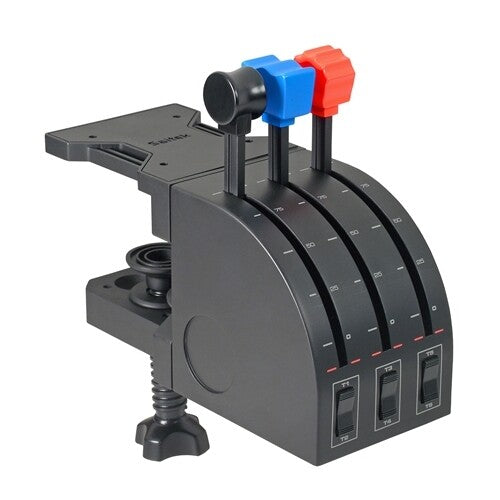
Flight Sim Controllers
Flight simulation enthusiasts can enhance realism and control with dedicated joysticks, yokes and throttle systems. Joysticks are budget‑friendly and compact, with prices starting as low as £30 and rising to a few hundred pounds for models with metal construction and Hall effect sensors. They take up less desk space than yokes and often include a twist axis for rudder control, eliminating the need for separate pedals. Yokes, on the other hand, emulate traditional aircraft controls and are preferred for simulating general aviation planes. They typically cost more and occupy more space but offer a more authentic feel; some users complement them with separate throttle quadrants and trim wheels for multi‑engine aircraft.
HOTAS (Hands‑On Throttle and Stick) systems pair a joystick with a separate throttle, replicating modern fighter jets and spacecraft. This setup allows pilots to control throttle, flaps, weapons and other systems without removing their hands from the controls. Many high‑end HOTAS units feature magnetic or Hall effect sensors for precise input, programmable buttons and hat switches for camera control. For serious flight sim enthusiasts, adding rudder pedals provides independent control of yaw and differential braking, enhancing realism during take‑off and landing. Pedal sets often include adjustable tension and anti‑slip bases.
Choosing between a joystick and a yoke depends on the aircraft you wish to simulate, your desk space and budget. Helicopter, Airbus and Cirrus aircraft are flown with side‑sticks, making joysticks more appropriate, while general aviation and commercial airliners use yokes. When shopping, consider features like programmable buttons, adjustable resistance, detents in throttles and compatibility with PC, Xbox or PlayStation platforms. Popular brands include Thrustmaster, Logitech G, Honeycomb and Turtle Beach, each offering entry‑level to professional‑grade systems.
